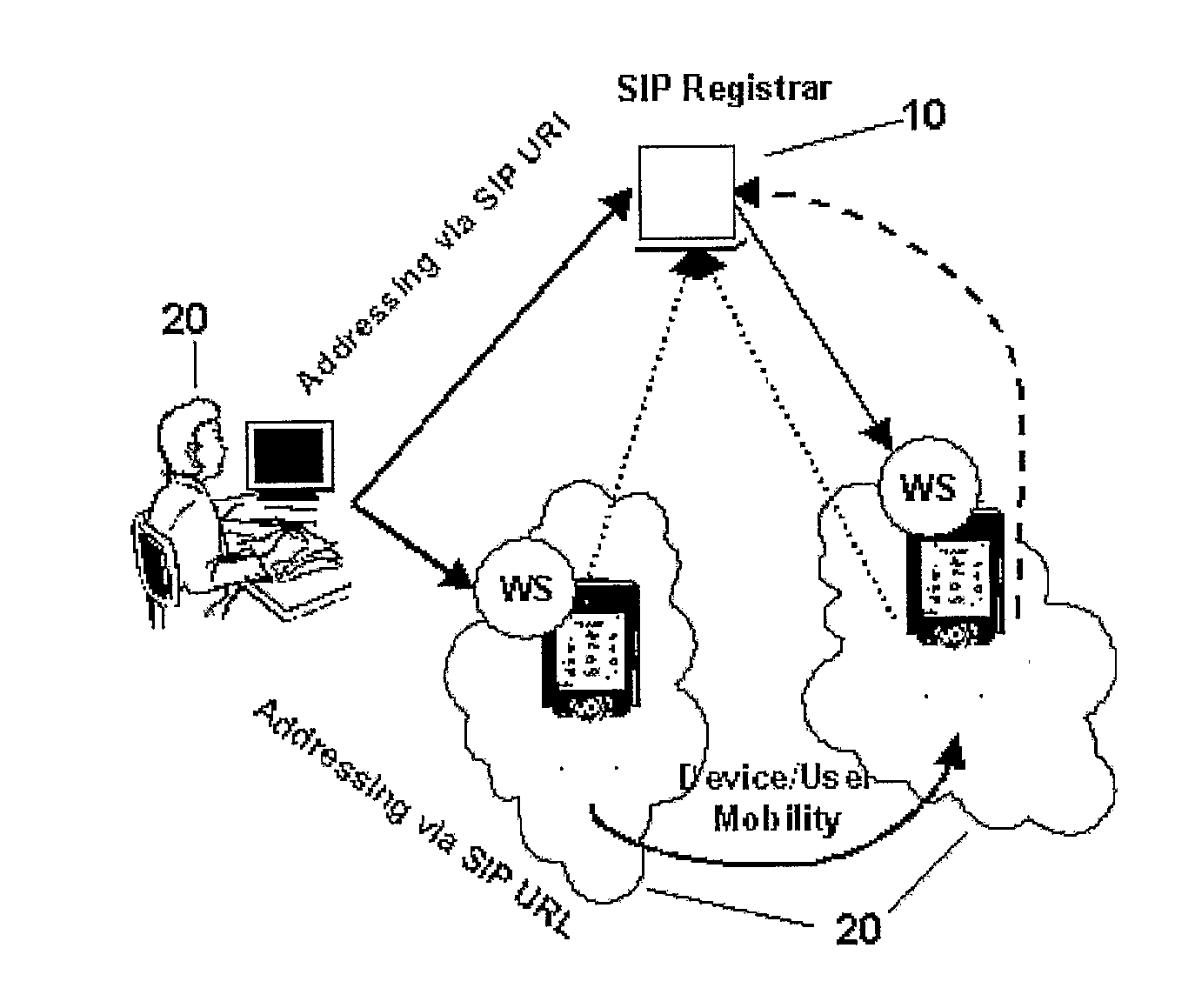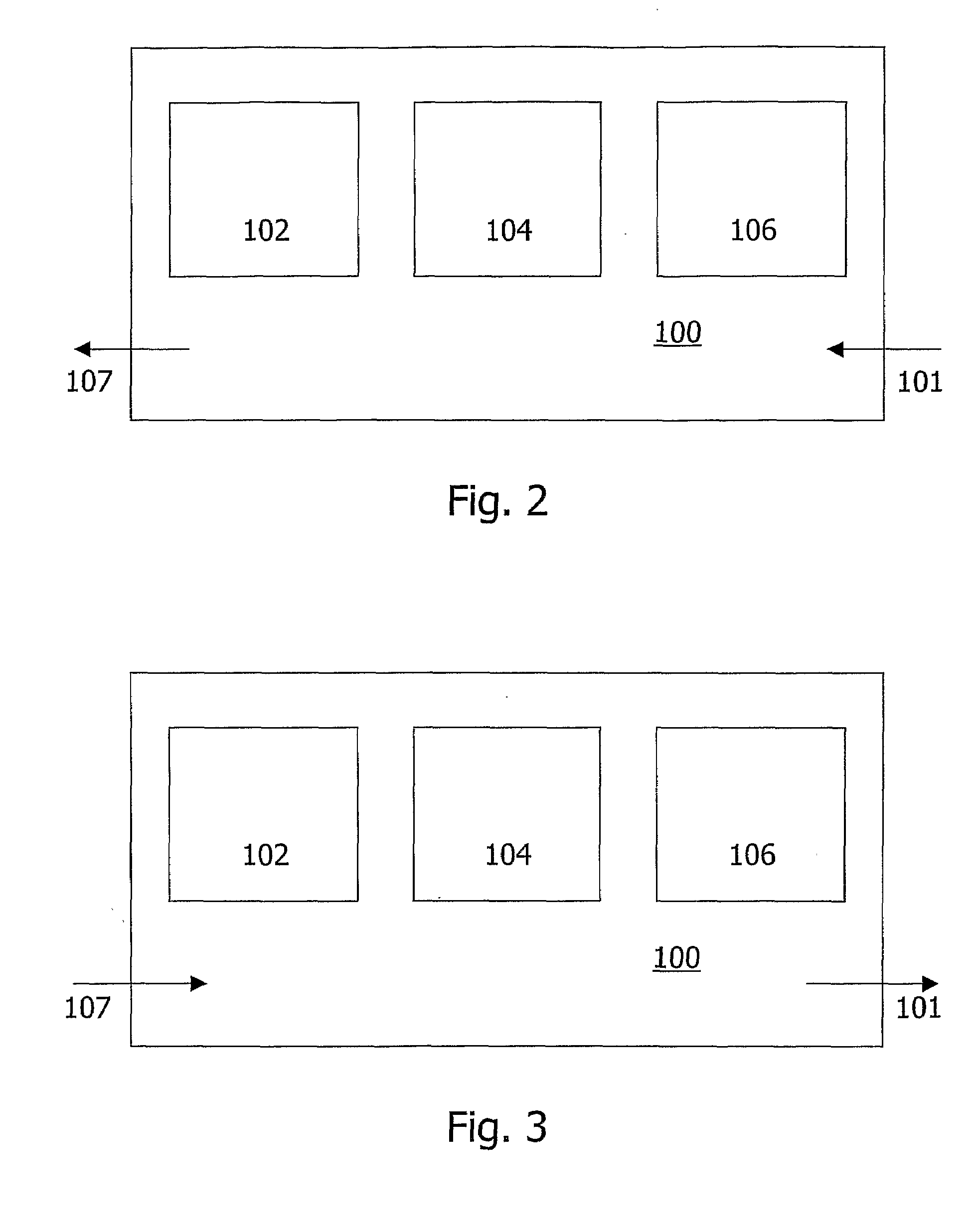Technique for providing interoperability between different protocol domains
a technology of interoperability and protocol domain, applied in the field of providing interoperability between different protocol domains, can solve the problems of reducing the availability and therefore the value of services, unable to provide access to external users to services, and many non-sip based services in the operator domain, so as to facilitate mapping
- Summary
- Abstract
- Description
- Claims
- Application Information
AI Technical Summary
Benefits of technology
Problems solved by technology
Method used
Image
Examples
Embodiment Construction
[0037]In the following description, for purposes of explanation and not limitation, specific details are set forth, such as particular sequences of steps, protocol standards and various configurations of devices in order to provide a thorough understanding of the present invention. It will be understood that the present invention may be practiced in other embodiments that depart from these specific details.
[0038]Moreover, those skilled in the art will appreciate that the functions explained herein below may be implemented using software functioning in conjunction with a programmed microprocessor or general purpose computer, and / or using an application specific integrated circuit (ASIC).
[0039]The technique for providing interoperability between different protocol domains according the present invention will firstly be described with reference to FIGS. 1 and 2. FIG. 1 schematically illustrates a method embodiment for providing interoperability between an IMS domain and a non IMS domai...
PUM
 Login to View More
Login to View More Abstract
Description
Claims
Application Information
 Login to View More
Login to View More - R&D
- Intellectual Property
- Life Sciences
- Materials
- Tech Scout
- Unparalleled Data Quality
- Higher Quality Content
- 60% Fewer Hallucinations
Browse by: Latest US Patents, China's latest patents, Technical Efficacy Thesaurus, Application Domain, Technology Topic, Popular Technical Reports.
© 2025 PatSnap. All rights reserved.Legal|Privacy policy|Modern Slavery Act Transparency Statement|Sitemap|About US| Contact US: help@patsnap.com



